In terms of general power consumption, the Nvidia GeForce GTX 1070 Ti FE is, as expected, exactly the point that Nvidia set with 100% Power Target and thus at the same level as the slightly larger GeForce GTX 1080 FE. On an overclocking of this card and the maximum possible increase of the power target to 120% (approx. 116 watts) we have deliberately dispensed with, however, as it hardly makes sense, because the card already runs into the thermal limit from the factory. For this we have the board partner card from MSI.
The MSI GeForce GTX 1070 Ti Titanium behaves very similarly (boring) with the factory settings and is only just above the power target of 180 watts. The tiny transgression should surely be at the expense of the two fans and the slightly more elaborate circuit layout.
What is fully effective, however, is the increase of the power target to the maximum possible 133%. Here, at the maximum OC, 233 watts of the possible 239 watts are reached before the voltage becomes the limiting factor. Without pre-empting the relevant section: it didn't matter if you were travelling with 100% fan load and 2.1 GHz or standard curve and 2050 MHz.
However, the fans end up eating up the certain temperature advantage at full fan speed, including slightly lower leakage currents. More than 233 watts simply did not go
The absolute peak of 290 watts at maximum overclocking (217 watts in normal mode) is rather theoretical in nature, because a well-equipped secondary side of modern power supplies, thanks to the low-impedance capacitors, loosely cushions these short peaks or. can smooth out. However, it also shows that older power supplies should be checked again for their suitability for modern graphics cards.
Nvidia (and also MSI) have relieved the motherboard slot (PEG) to such an extent that a breakdown of the rails in terms of their load is no longer worthwhile in order to log a possible standard violation. Where there is hardly anything left, there is no need to discuss anything.
Appendix 1 – Measurement protocols of the Nvidia GeForce GTX 1070 Ti FE
To enlarge, please click on the respective graphic:
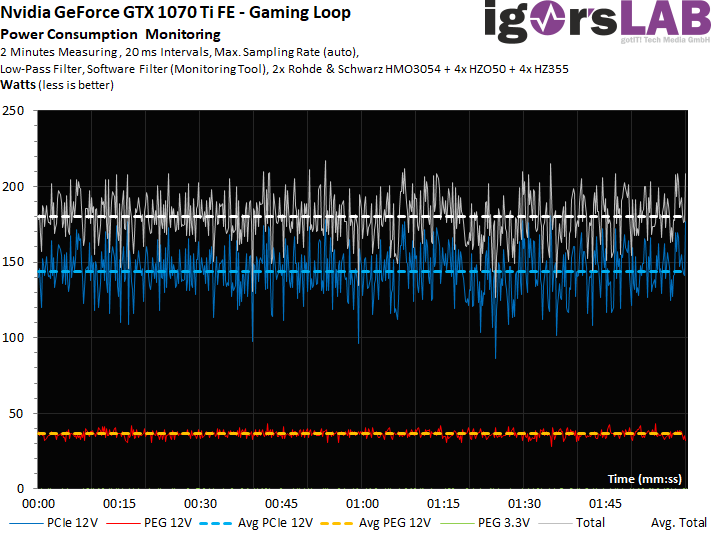 Gaming Loop – Power Consumption Gaming Loop – Power Consumption |
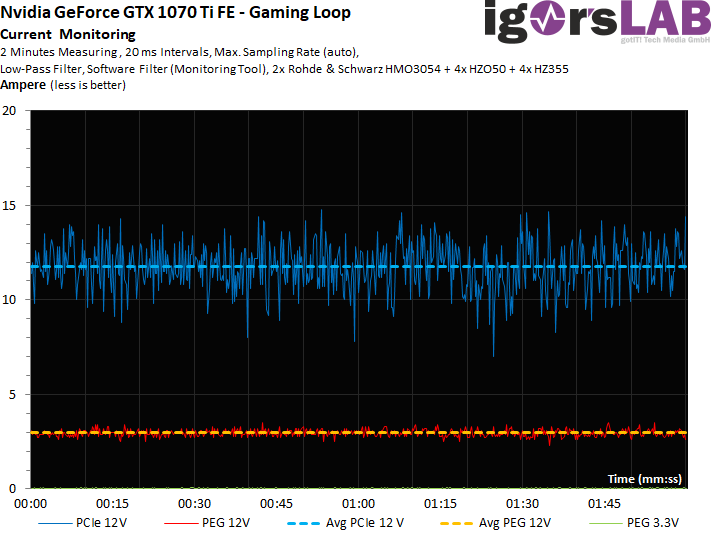 Gaming Loop – Current Gaming Loop – Current |
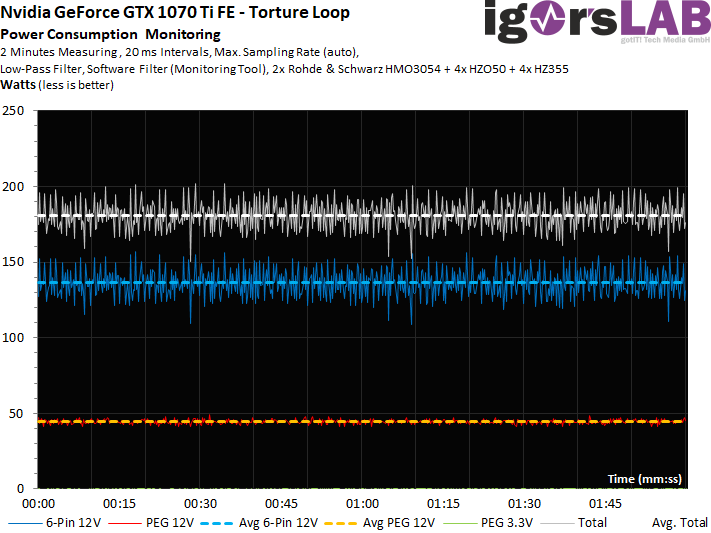 Torture – Power Consumption Torture – Power Consumption |
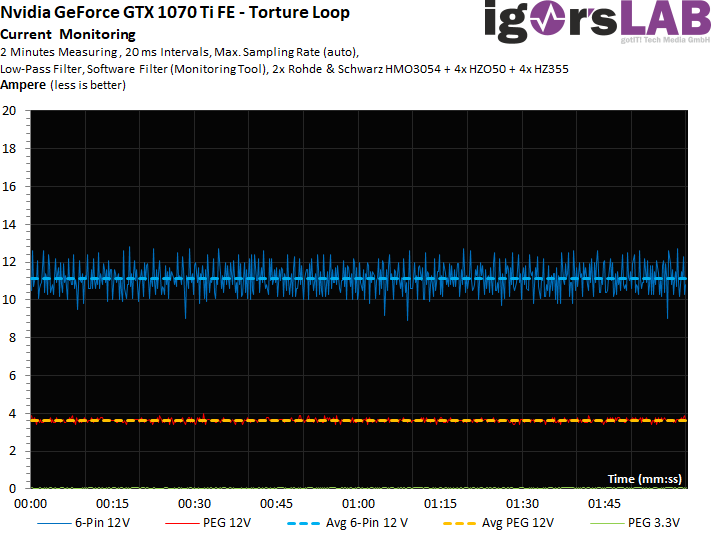 Torture Current Torture Current |
Appendix 2 – Measurement protocols of the MSI GeForce GTX 1070 Ti Titanium
To enlarge, please click on the respective graphic:
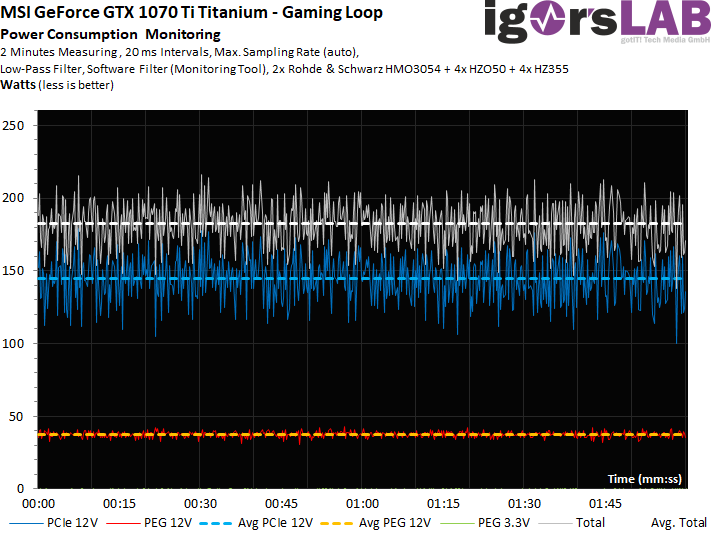 Gaming Loop – Power Consumption Gaming Loop – Power Consumption |
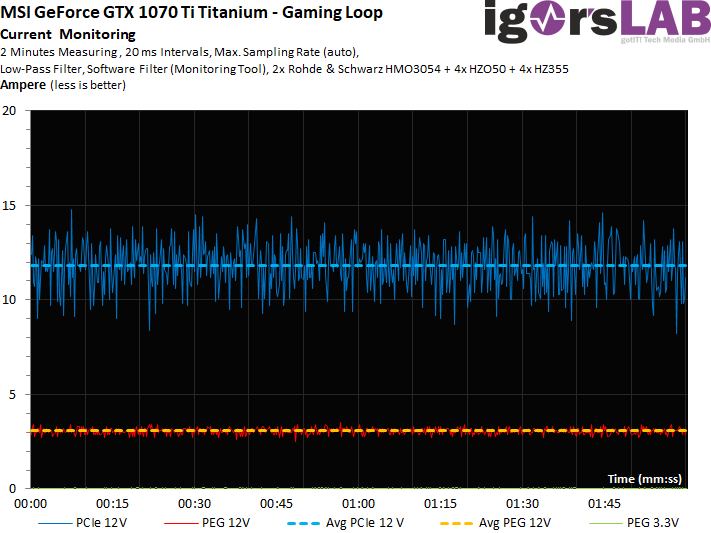 Gaming Loop – Current Gaming Loop – Current |
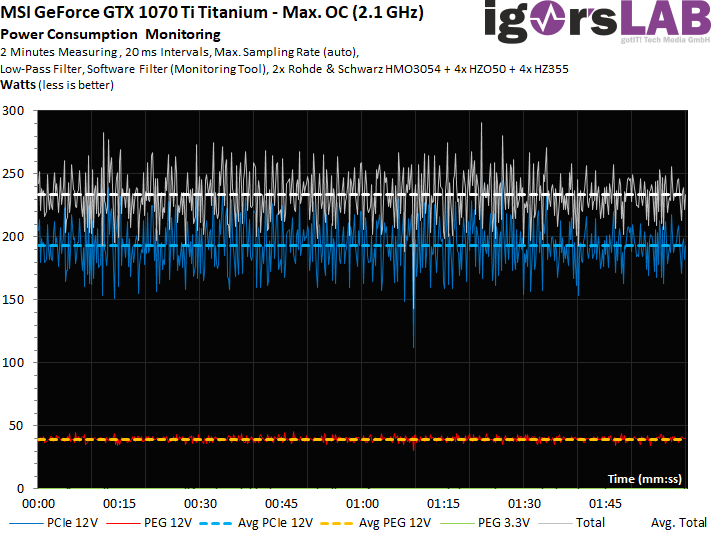 Maximum OC / 133% Power Target – Power Consumption Maximum OC / 133% Power Target – Power Consumption |
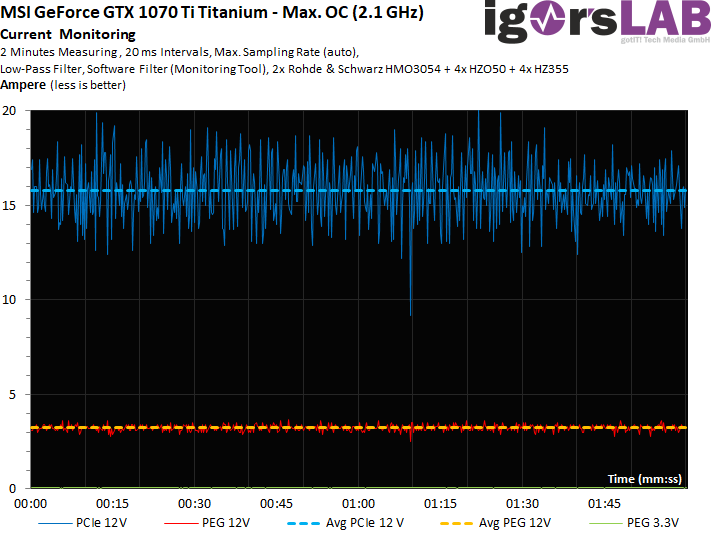 Maximum OC / 133% Power Target – Current Maximum OC / 133% Power Target – Current |
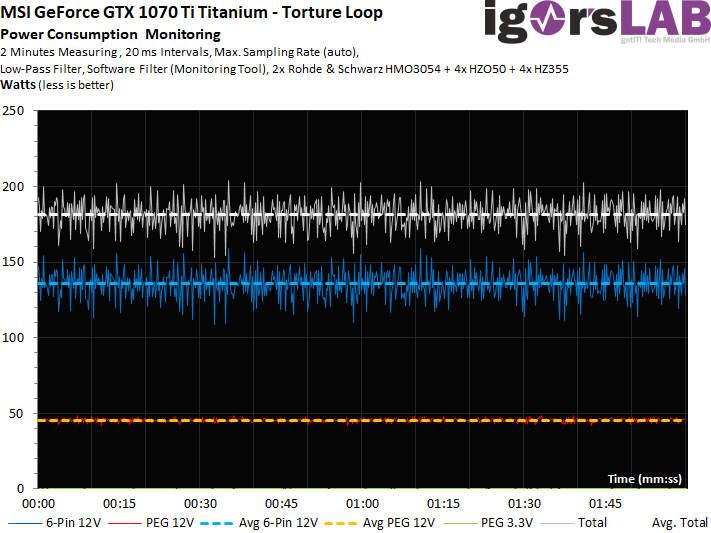 Torture – Power Consumption Torture – Power Consumption |
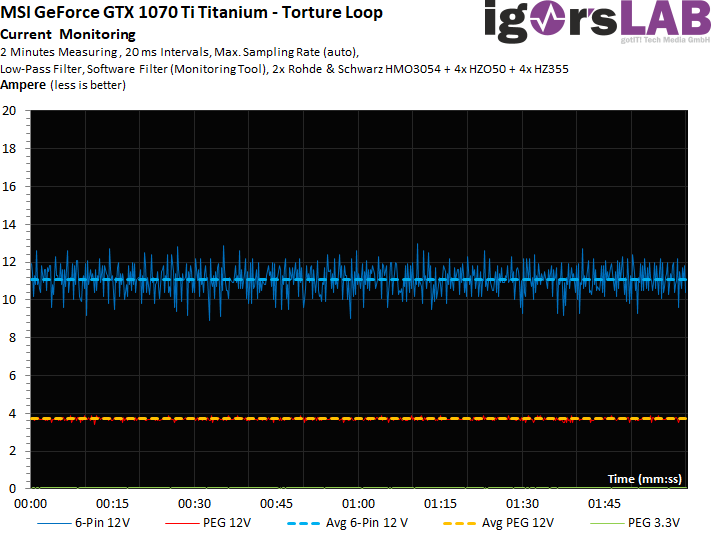 Torture – Current Torture – Current |
- 1 - Übersicht und Testsystem
- 2 - Testsystem und -methodik
- 3 - Im Detail: Nvidia GeForce GTX 1070 Ti FE
- 4 - Im Detail: MSI GeForce GTX 1070 Ti Titanium
- 5 - Ashes of the Singularity: Escalation (DirectX 12)
- 6 - Battlefield 1 (DirectX 12)
- 7 - Destiny 2 (DirectX 11)
- 8 - Doom (Vulkan)
- 9 - Metro: Last Light Redux (DirectX 11)
- 10 - Middle-earth: Shadow of War (DirectX 11)
- 11 - Rise of the Tomb Raider (DirectX 12)
- 12 - Tom Clancy’s Ghost Recon Wildlands (DirectX 11)
- 13 - Tom Clancy’s The Division (DirectX 12)
- 14 - Warhammer 40,000: Dawn of War III (DirectX 11)
- 15 - The Witcher 3 (DirectX 11)
- 16 - Leistungsaufnahme im Detail
- 17 - Temperaturen und Takt
- 18 - Übertaktung
- 19 - Lüfterdrehzahlen und Geräuschentwicklung
- 20 - Zusammenfassung und Fazit















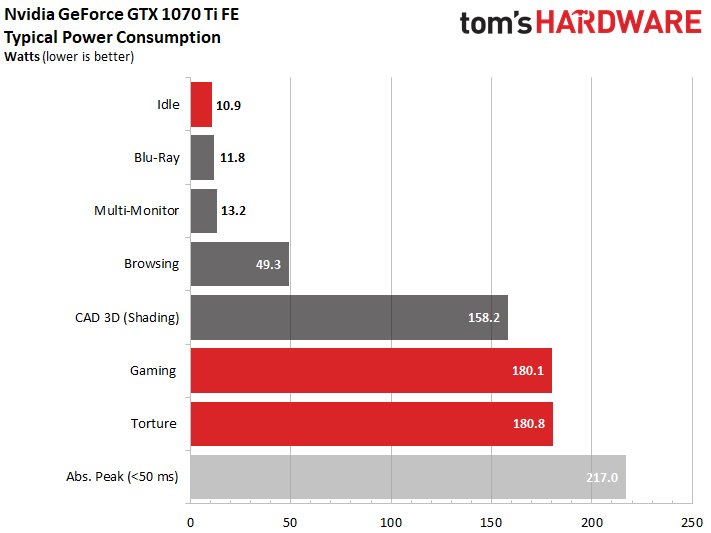
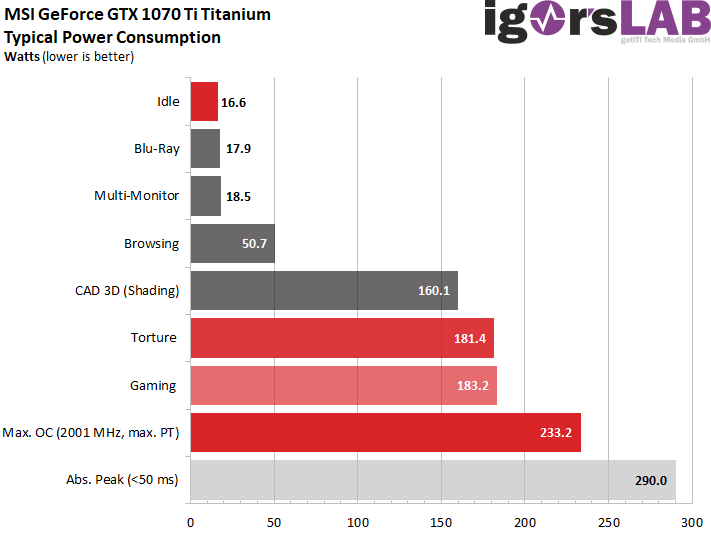

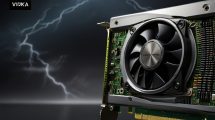















Kommentieren